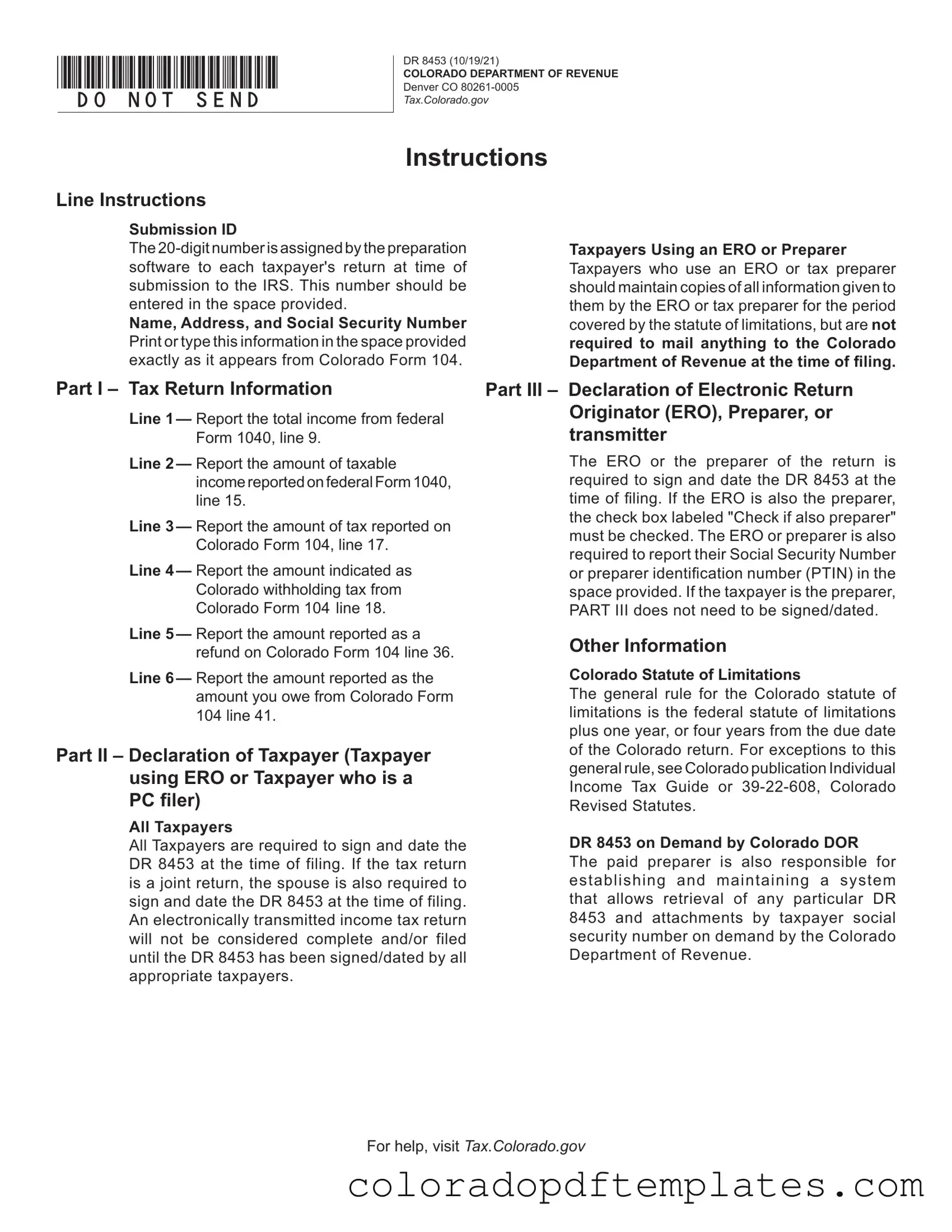The Colorado DR 8453 form is used for declaring your individual income tax when you file electronically. It acts as a declaration of the information you provided in your electronic tax return. This form should not be mailed to the IRS or the Colorado Department of Revenue; instead, you should keep it for your records.
If you are filing your Colorado income tax return electronically, you will need to complete the DR 8453 form. This includes both individual taxpayers and those filing jointly with a spouse. It ensures that the information submitted electronically is accurate and complete.
The DR 8453 form requires several pieces of information:
-
Your total income from your federal tax return.
-
Your taxable income.
-
The amount of Colorado tax you owe.
-
The amount of Colorado tax withheld.
-
Your refund amount.
-
The total amount you owe.
Make sure to use whole dollars only when filling out these sections.
Yes, you must sign the DR 8453 form to confirm that the information you provided is true and correct. If you are filing jointly, both you and your spouse need to sign the form. This signature serves as a declaration under penalties of perjury.
After you complete and sign the DR 8453 form, keep it with your tax records. You do not need to send it to the IRS or the Colorado Department of Revenue. Retaining this form is important in case you need to reference it in the future or if there are any questions regarding your tax return.
No, you cannot e-file your Colorado income tax return without completing the DR 8453 form. This form is essential for verifying the information you submitted electronically. It acts as a safeguard to ensure accuracy and compliance with tax regulations.
